Applications of Matrices and Determinants - Choose the correct answer | 12th Business Maths and Statistics : Chapter 1 : Applications of Matrices and Determinants
Chapter: 12th Business Maths and Statistics : Chapter 1 : Applications of Matrices and Determinants
Choose the correct answer
Choose the correct answer
1. If A=(1 2 3), then the rank of AAT is
(a) 0
(b) 2
(c) 3
(d) 1

2. The rank of m û n matrix whose elements are unity is
(a) 0
(b) 1
(c) m
(d) n
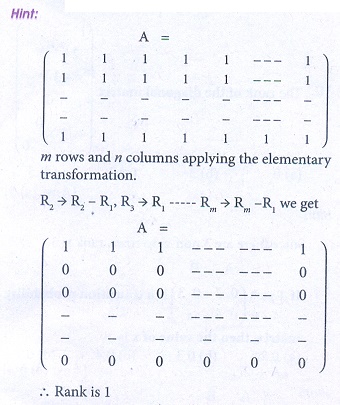
3. If  is a transition probability matrix, then at equilibrium A is equal to
is a transition probability matrix, then at equilibrium A is equal to
(a) 1/4
(b) 1/5
(c) 1/6
(d) 1/8
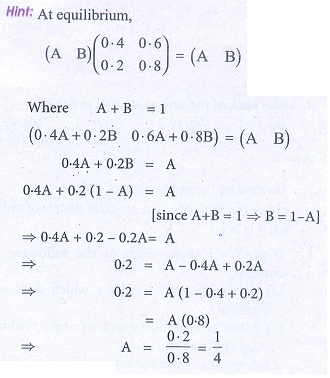
4. If A =  , then ü(A) is
, then ü(A) is
(a) 0
(b) 1
(c) 2
(d) n
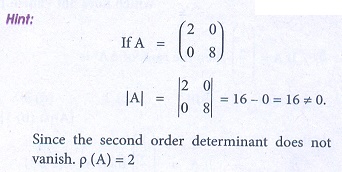
5. The rank of the matrix  is
is
(a) 0
(b) 1
(c) 2
(d) 3
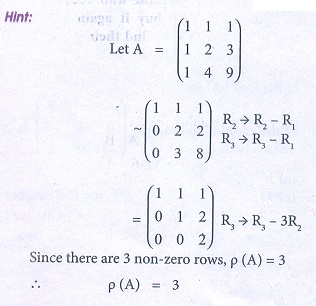
6. The rank of the unit matrix of order n is
(a) n ã1
(b) n
(c) n + 1
(d) n2

7. If ü (A) = r then which of the following is correct?
(a) all the minors of order r which does not vanish
(b) A has at least one minor of order r which does not vanish
(c) A has at least one (r+1) order minor which vanishes
(d) all (r+1) and higher order minors should not vanish
8. If A =  then the rank of AAT is
then the rank of AAT is
(a) 0
(b) 1
(c) 2
(d) 3
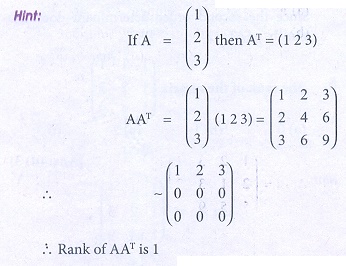
9. If the rank of the matrix  is 2. Then ö£ is
is 2. Then ö£ is
(a) 1
(b) 2
(c) 3
(d) only real number
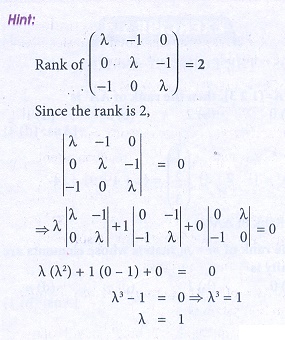
10. The rank of the diagonal matrix 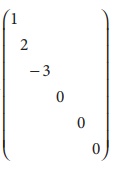
(a) 0
(b) 2
(c) 3
(d) 5

11. If T =  is a transition probability matrix, then the value of x is
is a transition probability matrix, then the value of x is
(a) 0.2
(b) 0.3
(c) 0.4
(d) 0.7
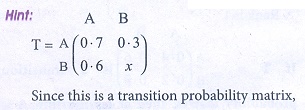
12. Which of the following is not an elementary transformation?
(a) Ri ã Rj
(b) Ri ã 2 Ri + 2Cj
(c) Ri ã 2 Ri ã 4Rj
(d) Ci ã Ci + 5Cj

13. If ü(A) = ü(A, B) then the system is
(a) Consistent and has infinitely many solutions
(b) Consistent and has a unique solution
(c) Consistent
(d) inconsistent

14. If ü(A) = ü(A, B) the number of unknowns, then the system is
(a) Consistent and has infinitely many solutions
(b) Consistent and has a unique solution
(c) inconsistent
(d) consistent

15. If ü ( A) ã ü ( A, B) , then the system is
(a) Consistent and has infinitely many solutions
(b) Consistent and has a unique solution
(c) inconsistent
(d) consistent

16. In a transition probability matrix, all the entries are greater than or equal to
(a) 2
(b) 1
(c) 0
(d) 3

17. If the number of variables in a non- homogeneous system AX = B is n, then the system possesses a unique solution only when
(a) ü ( A ) = ü ( A, B ) > n
(b) ü ( A ) = ü ( A, B ) = n
(c) ü ( A ) = ü ( A, B ) < n
(d) none of these
18. The system of equations 4x + 6 y = 5, 6x + 9 y = 7 has
(a) a unique solution
(b) no solution
(c) infinitely many solutions
(d) none of these
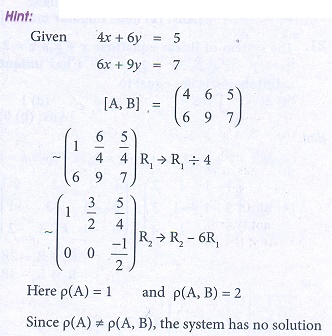
19. For the system of equations x + 2 y + 3z = 1, 2x + y + 3z = 2 5x + 5y + 9z = 4
(a) there is only one solution
(b) there exists infinitely many solutions
(c) there is no solution
(d) None of these
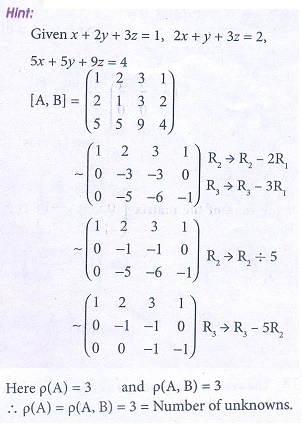
20. If |A| ã 0, then A is
(a) non- singular matrix
(b) singular matrix
(c) zero matrix
(d) none of these
21. The system of linear equations x + y + z = 2, 2x + y ã z = 3, 3x + 2 y + k = 4 has unique solution, if k is not equal to
(a) 4
(b) 0
(c) ã4
(d) 1
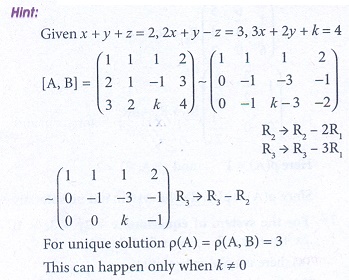
22. Cramerãs rule is applicable only to get an unique solution when
(a) öz ã 0
(b) öx ã 0
(c) ö ã 0
(d) öy ã 0
23. If
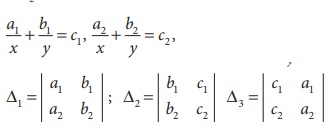
then (x y) is
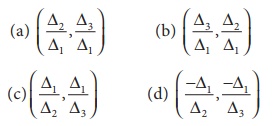
Ans: (d)
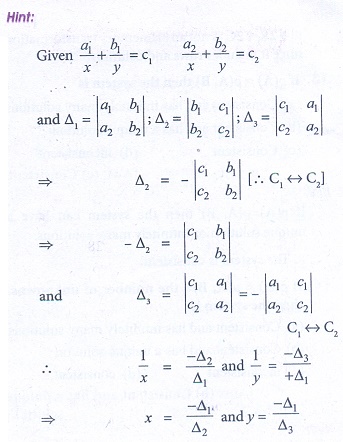
24. |An ûn| = 3 |adjA| = 243 then the value n is
(a) 4
(b) 5
(c) 6
(d) 7
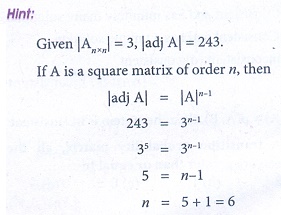
25. Rank of a null matrix is
(a) 0
(b) ã1
(c) ã
(d) 1

Related Topics